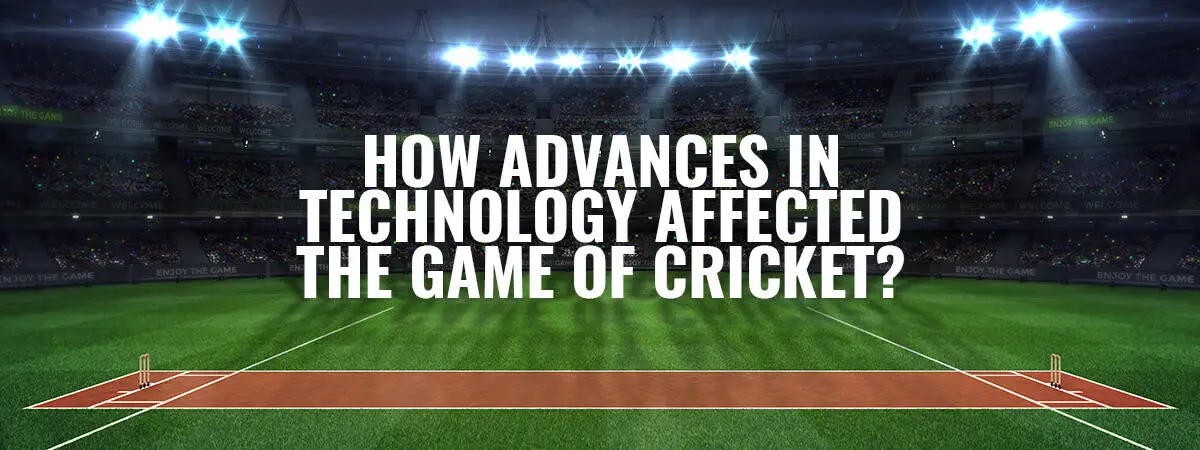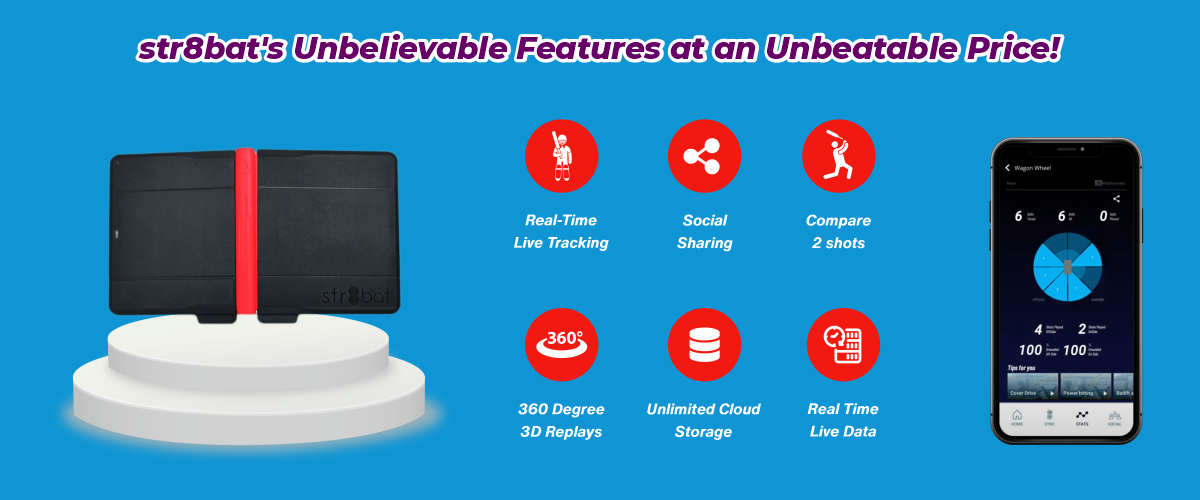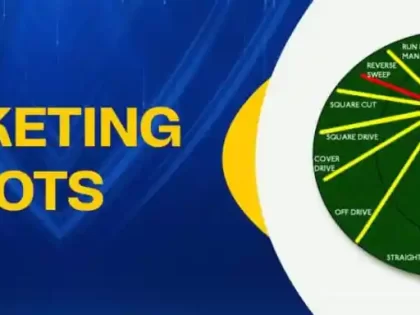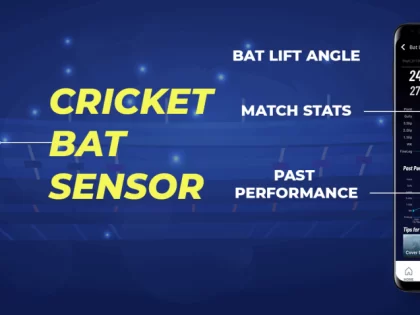Evolution of Technology in Cricket till 2022

“No dream is ever chased alone.”
– Rahul Dravid
It is evident by the above quote that no one can achieve any goal in isolation. In the game of cricket, other than players and coaches or commentators, technology in cricket has its integral role to play.
Technology has seamlessly merged into the game of cricket. From managing competition and database of cricketers around the world, technology has influenced cricket coaching to viewership of the game. There is a paradigm shift in technological focus from broadcasting to introducing reforms in gameplay and decision making. Technology in cricket has helped coaches to get the best out of players and teams. This benefited spectators and players to evolve as ultimate winners to witness a higher level of sports.
Technological advancements like hawk eye technology, third umpire technology in cricket make the process of decision making simpler on the other side, tools like cricket bat sensors or ball spin RPM enhance the playing techniques and analytics of cricket for better.
Hail with applause to technology in cricket that took the game of cricket beyond the alleys of england.
Technology in cricket played a remarkable role to establish the credibility of sport beyond the alleys of England and touched the lives of more than 1 billion cricket spectators around the world.
Do you want to know more about new technology in cricket and how advances in technology affected the game?
Then this blog is for you!
Read it entirely, here we have covered some of the remarkable advancements that take the game of cricket to a new level.
Evolution of technology in cricket over the years (Till 2022)
If we divide technological changes in two segments, we can claim that the 20th century belonged to broadcasting or commentary advancement and the 21st century to coaching techniques and analytical advancements.
Between the 30’s to 80’s majorly technology was used to take the game of cricket closer to spectators. As television was a luxury in those days, so the main focus was on radio commentary. But soon television broadcasting of cricket came in trend and special commentary rooms were set up for spectators.
Let’s move on to cover the astounding technological advancement in cricket till 2022.
1. Fergie’s wagon wheel (First Technology in Cricket– Early 20 Century)

More than 100 years ago, an Australian clerk known as Fergie created a wagon wheel to show the batting innings of the batter’s scoreboard. It is more than a century that has passed but still, the wagon wheel holds special importance in the game of cricket. Spectators can witness the graphical representation of batting shots on tv screens, with time these representations took a three-dimensional graphical representation, but without a second thought, it gives an in-depth insight into the batter’s flexibility to score multi-dimensional cricket shots.
2. The bowling machine(1985)

The bowling machine was invented by Michael Stuart in 1985 with the purpose of batting training. The bowling machine opened the doors of innovations in the field of coaching. This machine can replicate the spin and swing bowling styles of bowlers. Based on the rifling theory of sidespin, the bowling machine uses two spinning wheels and one barrel that bowls sidespin. Soon new features were added to this machine and paired with a remote control system to facilitate coaches to keep track of the batting skill of batters for the leg break and off-break deliveries. This machine can add variations in ball speed and add swing by keeping seam orientations like real bowlers.
Many readers must have experienced this machine in clubs or play zones at malls and faced bowling delivery styles of fast and spin professional bowlers from around the world.
3. Snickometer -ultraedge (1990)

Often referred to as sniko, the snickometer was invented by the British computer scientist Allan Plaskett in the ’90s. Snickometer empowers third umpires to take complex decisions on catches and LBW appeals. The sound of a bat hitting the ball is shown in the form of a spike on a graph.
Snick-o-meter is an unbeatable technology advancement that is still in use. In the sinckometer one microphone is installed on stumps, and when the ball comes in contact with the bat, the hit impact is for a shorter period of time; that generates a specific type of sound frequencies. But if the ball touches gloves or pad, then sound frequencies are of different types. After synchronization, the microphone captures these sound waves and amplifies them with slow-motion cameras which are then shown as spikes on graphs. Graphical representation of sound waves confirms whether the ball has touched the bat or not. The presence and detailing of spikes will ensure the result to the third umpire on screen.
4. Stump Mic & Camera (mid of 1990)

Stump mic and camera are also very useful tools to confirm dismissals. Two micro cameras are inserted into the hollow part of the stamps that captures the front and back area of the stumps. These cameras are connected with underground wires to transmit the data to pc or broadcasters. It provides useful information about the quality of cricket shots, foot movement of batters, and dismissals by stumping, run-outs, or close catches.
5. Third Umpire (1992)

Sri Lankan team first conceptualized the third umpire technology in cricket in the year 1992 during domestic cricket matches. The third umpire is an off-field umpire and his role is to assist on-field umpires in the case of doubt. The third umpire has the leverage of various screen and replay tools that can help on-field umpires to pass a verdict in a more scientific and practical manner. It would be interesting to mention that Sachin Tendulkar was the first victim of the third umpire system who was declared run out by Karl Liebenberg
6. Speed gun (1999)

The speed gun or Radar Gun was first introduced in 1999 with the motive of knowing the speed of the bowlers. This gun works on a similar principle to that of a car speed radar, mainly used by traffic police on roads to know the speed of moving vehicles. It supports the principle of Doppler shift and confirms the speed of bowling delivery by the bowler. The main aim of introducing speed gun was to know the speed of fast bowlers and facilitate them with the speed of their deliveries.
7. HawkEye – Ball Tracking System (2001)

Hawk-Eye technology in cricket was developed in 2001 by British national Dr. Paul Hawkins to make television broadcasting more interactive. Multiple cameras are placed under the roof of the stadium to capture the ball from different angles, videos of six cameras are combined together and a three-dimensional video is created. The help of Hawk’s eye technology is generally taken for the second opinion, to know the line and length of the ball delivered, bowling delivery’s impact with the position of batter’s leg, and projection of ball movement beyond. With Hawk’s eye view, the third umpire can view deliveries bowled and its impact from various angles, this improves the decision making.
8. Spidercam (2004)

Like Hawk-eye, spider cam is also used in many sports. It is a rotating camera that is built on winch and cable systems. Spidercam can move vertically and horizontally in all dimensions of the cricket ground to give a bird’s eye view of the cricket ground along with a zooming view of the cricket pitch. There are many uses of spidercam starting from assisting third umpires with 3D ground data to confirming run-out decisions and showing the anguish of batters in case of dismissals. Spidercam makes video delivery of entire cricket grounds from multiple angles possible.
9. Hotspot Edge Detector (2006)

The hotspot is based on an infrared image system. It establishes whether before going to the ball to the fielder it is struck with the bat or not. When the ball hits the bat, glove, or pads of the batter it generates friction. As we know scientifically friction generates heat. Hence with the help of an infrared image system friction is shown as light. This helps the third umpire to know the exact impact of a ball on the batter, thus making the decision easy.
10. Pitch vision (2007)

Pitch vision was developed by a UK based firm and mainly applied in cricket coaching. This technology helps bowlers to analyze their ball’s length, bounce rate, foot position on crease, or deviation. This technology is a boon for bowlers and improves their overall bowling skills. It helps batters by analyzing their cricket shot variations to different types of bowling lengths.
11. Decision Review System (2008)

DRS is a technology-based system that helps to reach better decision-making by third umpires. Either side of the players gets an opportunity to challenge the decision of the on-field umpire by referring it to the third umpire. This is called a player review that is sought against dismissal. From the bawling side only the captain can ask for review whereas, on the batting side, the striker can demand. Players get 15 seconds of the window to opt for the review. With DRS, the third empire takes the help of all angles and technological ends to reach a better understanding of decisions.
12. Led Stumps bails/smart bails(2012)

Developed by Australian mechanical designer Bronte Ec Kermann, bails carry a microsensor that gets lit as the bails or stumps are hit. Led bails are very helpful in runout or stump-out cases.
13. Ball Spin RPM(2013)

Ball spin RPM gives an idea about bowling spin deliveries by spin bowlers. It gives an idea of the spin or turn the ball makes before striking to the bat. It gives an insight into the spin quality of the spinners.
14. Cricket Bat Sensor(2018)

The cricket bat sensor is one of the revolutionary technological advancements in cricket with regard to upscaling cricket shots. str8bat launched their first cricket bat sensor in 2018, it helps batters to improve their gameplay by recording and analyzing the quality of shots. They can share their recording with their coach and can compare their data after a certain interval of time. The statistics and recording of batting data can help batters to excel in their game of cricket.
15. Flying camera/Drone(2019)
Flying cameras or drones help to capture a better 360-degree view of the cricket ground by giving a bird’s eye view of the entire ground. It mainly helps to make the game-watching experience more appealing. It won’t be wrong to consider drones as an extension of technology in cricket as well.
Technology in cricket in 2022: What new we will be going to see?
Cricket has undergone a lot of changes in its evolution and we believe that technological advancements in cricket will continue to inspire and support each and every one who can connect with this game.
However not every technology is welcomed by ICC. But still, governing bodies are in a constant bid to improve the various aspects of the game and have time-to-time incorporated the latest technology into the sport.
Are you excited to know what more breathtaking technologies are coming in 2022 or the near future?
Yes!
Here are some technologies which are supposed to hit the floor by 2030
- Retractable roof to continue the game of cricket in challenging weather conditions.
- Compression garments, a piece of clothing that provides support to people who have to stand for a long duration or have poor circulation.
- No-ball sensor to avoid no-ball calls that result in adding an extra run to the scoreboard.
- Inertia sensor is an instrument that senses the change in the spatial position of any body part like wrist, elbow, and shoulder joints to determine the elbow extension and catch the illegal action of the bowler.
- Practice equipment to provide a live match experience to young players while practicing.
The blog will end here but not the list of technology in cricket that will continue to evolve in the future. Change is part of life, whether on-ground or off-ground, as progress is impossible without change.




